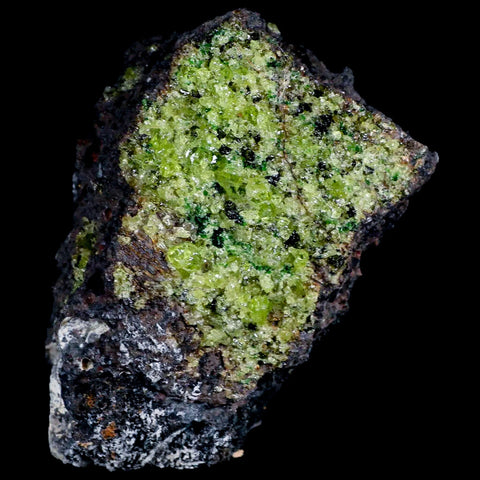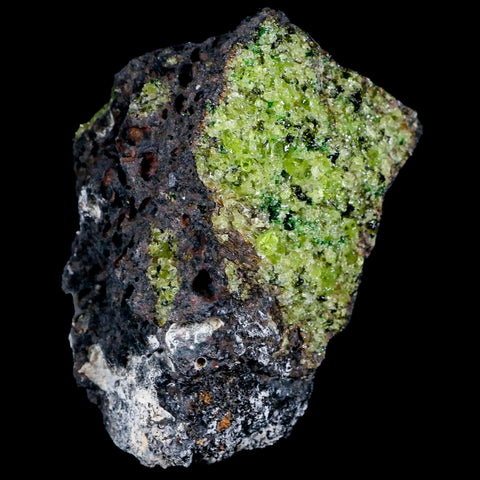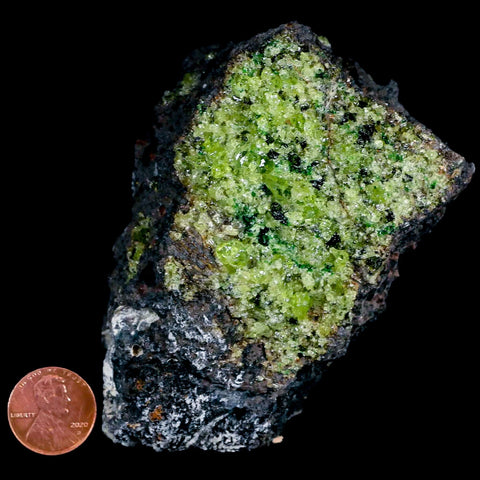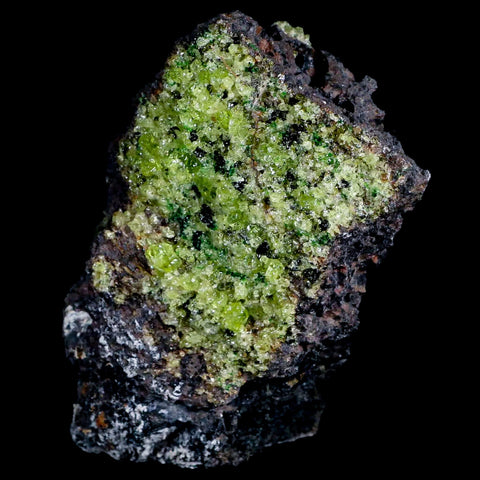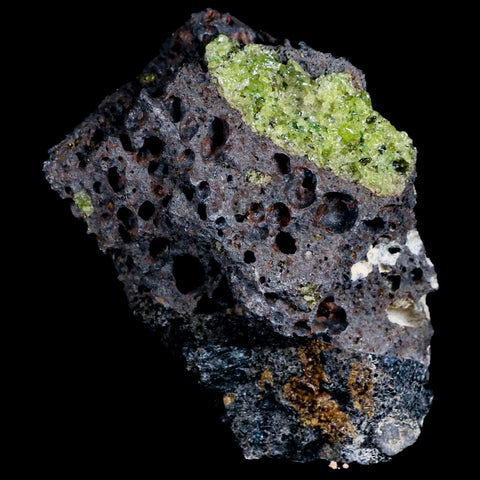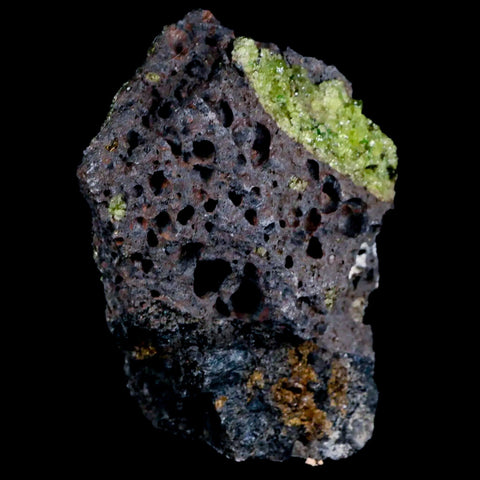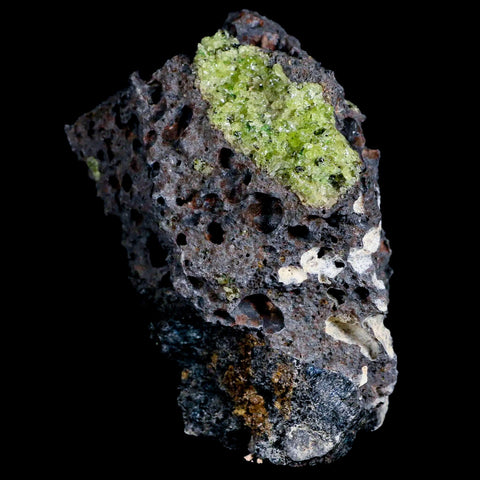3.7" Emerald Peridot Crystals, Chrome Diopside And Spinel On Volcanic Rock Gila, AZ
Location: Gila, Arizona
Weight: 13.5 Ounces
Dimensions: 3.7 Inches Long, 2.6 Inches Wide, 2.1 Inches Thick
The item pictured is the one you will receive.
Peridot is a gemstone that belongs to the olivine mineral group. It is a transparent green gemstone that is known for its vibrant color and clarity. Peridot is one of the few gemstones that occur in only one color, which is green. The intensity and shade of green can vary depending on the iron content within the stone. Peridot has been used in jewelry for thousands of years and has been prized for its beauty and rarity.
Peridot has a hardness of 6.5-7 on the Mohs scale, making it suitable for use in jewelry such as rings, earrings, necklaces, and bracelets. It is important to handle peridot with care as it can be sensitive to heat and chemicals.
Chrome diopside, also known as Russian diopside, is a rare form of the mineral diopside that is valued for its deep green color. It is a type of pyroxene mineral and is typically found in igneous rocks such as kimberlites and basalts. Chrome diopside gets its vivid green color from the presence of chromium within its crystal structure. The gemstone is relatively soft compared to other popular gemstones like diamonds, making it more prone to scratches and damage.
Chrome diopside is primarily sourced from mines in Siberia, Russia, where it was first discovered in the 1980s. The gemstone has gained popularity in recent years due to its rich color and affordability compared to other green gemstones like emeralds. Chrome diopside is often faceted to enhance its brilliance and is used in various types of jewelry such as rings, earrings, necklaces, and bracelets.
Spinel is a mineral that belongs to the spinel group, which consists of minerals with the same crystal structure. It is composed of magnesium aluminum oxide and is commonly found in metamorphic rocks. Spinel is known for its vibrant colors, including red, pink, blue, purple, orange, yellow, green, brown, black, and colorless varieties. The red variety of spinel is often mistaken for ruby due to its similar appearance. Spinel has been used as a gemstone for centuries and has been prized for its beauty and durability.



